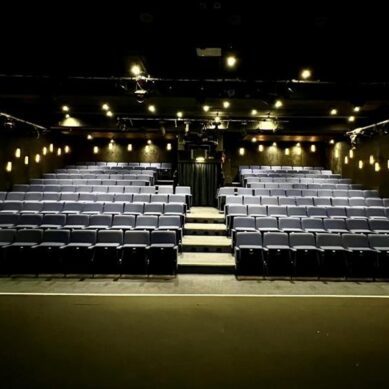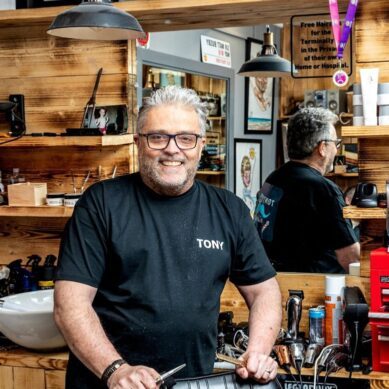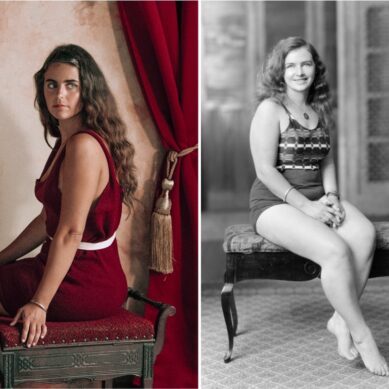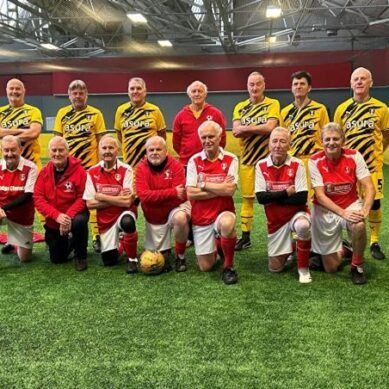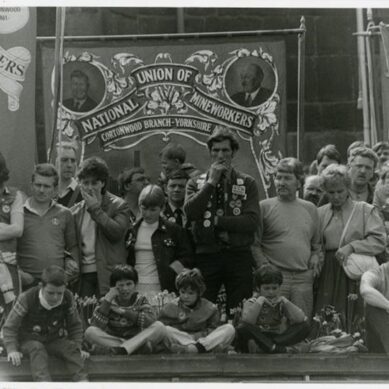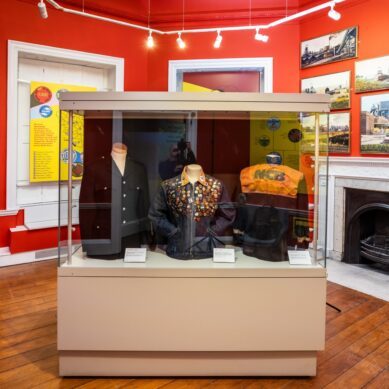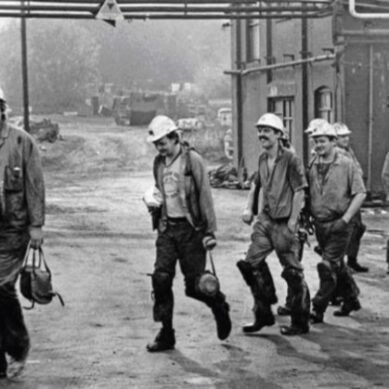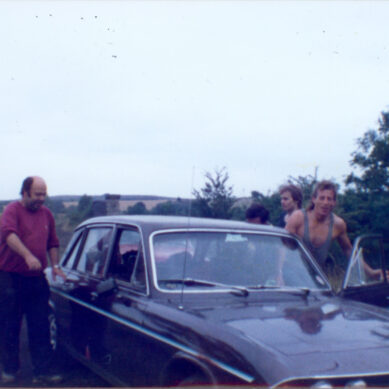Museums are an invaluable part of the fabric of society, where communities come together to broaden their horizons, heightening their understanding, compassion and respect for culture through the many priceless treasures that sit silently inside.
Since it opened in 1893, Clifton Park Museum in Rotherham has been well-loved by families who travel near and far to see Nelson the lion and find out more about the town’s social and industrial history. However, a new project has a brought a unifying power to the museum’s collections by interlacing shared traditions of people in Rotherham to celebrate the town’s vibrant cultural heritage.
Our World: discover objects, explore stories, and make connections was established to develop a better understanding of Rotherham’s many communities and create a greater sense of belonging through everyday objects. While different cultures have their own traditions, there are also many similarities that connect us – whether that’s items we use at home, tools, jewellery or trinkets.
The museum’s library gallery now tells the story of Rotherham past and present. Visitors can find never-before-seen artefacts from the original collection dating back to the museum’s beginnings, right through to items from the 1940s onwards that highlight the social and working lives of people in Rotherham. There are top hats and dance shoes, remnants of the many industries that powered the town, and the infamous two-bodied kitten from Steel, Peech and Tozer.
Reinterpreting the idea of world cultures
One focus of the Our World project is to look at new ways to curate exhibitions, reinterpreting the idea of world cultures through more ethical ways of collecting objects. In the 1920s, the museum’s curator Ethert Brand wanted to educate people who couldn’t travel about the world beyond Rotherham. He also further developed the museum’s World Cultures Collection, which has over 300 items collected from across the continents.
By today’s standards, this colonial perspective of trading or acquiring items is outdated and inappropriate, with the Rotherham Museums, Arts and Heritage team striving to acknowledge the past and highlight the need for more collaborative approaches to curation. Together with Rotherham Ethnic Minority Alliance (REMA), the team has worked with diverse communities to discuss how relevant the items in the collection are and whether they form connections with different groups.

The team has also invited these communities to loan or donate items that have a connection to the town or a story to tell.
Sithule Mguni, who works with REMA, donated a collection of possessions she inherited from her friend Ediberto Nabong when he moved back to the Philippines last year. Ediberto had lived in Rotherham since 2010 with his British partner whom he met while travelling in 1995. Together, they explored the world and brought back items that reminded Ediberto of home in the Philippines to keep that connection to his birthplace while in the UK. Two years after his partner died in 2019, Ediberto left the UK and couldn’t afford to take these precious objects with him.
“They were too beautiful to throw away and I thought the objects would be a good reminder for others about the Philippines. But they also reminded me of similar items we have in my own home in Zimbabwe,” Sithule says.
Sharing stories, items and traditions
The project was funded by the Esmee Fairbairn Collection Fund to improve engagement and representation with Rotherham’s diverse communities to reflect the town’s changing demographic. It draws on the full range of backgrounds and perspectives to make sure the exhibition resonates with everyone – and that all voices are heard.
Voices like Zanib Rasool MBE whose parents were part of the first generation of Pakistani migrants to come to Britain in the late 1950s with only a suitcase of their belongings. Haji Ghulam Rasool first came to Newcastle before he, his wife and children moved to Rotherham in 1969 where he got a job in the steel industry at Robert Jenkins. He then worked at Sheffield Forgemasters as a forklift driver.
Zanib and her siblings grew up in Tenter Street in Masbrough which was also home to immigrants from Ireland, Italy, Yemen and Poland. These communities brought diversity to Yorkshire through language, culture, music and food. Zanib’s childhood memories are the epitome of many mid-century Rotherham families: of children playing marbles, hopscotch or football in the street; the clanking sounds and billowing smoke coming from the steel factories; milk floats, coal lorries and the rag and bone man heading down the street. And of course, weekends spent at Clifton Park or on her dad’s allotment.
“My favourite memory is going to Clifton Park, visiting the museum, and seeing Nelson the lion. We would sit near the bandstand and listen to the brass band practising while my brothers played football. After my father was made redundant, he leased an allotment and spent many hours growing his own food and spending time with his Italian and Polish friends. In the summer, he would go to the allotment in the morning and take his sandwiches, not coming home until the evening,” Zanib says.

Back home in Pakistan, Zanib’s father didn’t have the opportunity of an education. Aged 12, he left his home in Mirpur to work as a rickshaw driver in Karachi to support his widowed father who was injured in the Burma War. He finally learnt to read the Qur’an aged 50 and taught so many people in Rotherham and Sheffield. In 2002 he also set up a school in his hometown for boys from poor families, funded by donations from family and close friends some of whom live in Rotherham. Haji Ghulam Rasool passed away ten years ago but the school still educates around 70 boys.
Zanib loaned some of her father’s belongings to the project along with a poem she wrote about him and her memories growing up.
“Imagine knowing you’re leaving home for a long time; what do you take in just one suitcase? It’s like Desert Island Discs. But my father made Rotherham his home; he had strong values and work ethics and encouraged us to give something back.”
Creating new resources for the Walker Kitchen
To complement the new displays, the project also delivered creative activities inspired by the World Cultures Collection to families, schools and communities to create new resources for the Walker Kitchen.
Local ceramic artist Caroline Lee worked with the English Conversation Group to create bright and bold ceramic tiles to represent their own heritage and memories, and jugs and pots with Apna Haq inspired by the ceramics within the world cultures collection. The Kashmiri and Yemeni Older People’s Forum created paintings on canvas with Islamic calligraphy artist Uzma Rani.

There has also been a storybook produced by illustrator and picture book maker, Rose Feather, called Where Our Stories Live which is based around objects in the home and kitchen. Rose worked with 60 children from Coleridge Primary School, young people with disabilities from the Sense Centre, as well as families from African, Polish, Roma, Slovak, and Pakistani communities. The groups shared their stories and memories of traditions and created illustrations of themselves eating their favourite foods or of the artefacts in the museum.
“It was very uplifting and I was blown away by the creativity and generosity of everyone involved. People in Rotherham want to talk about their heritage and they do so with so much pride,” Rose says.
The free book will now be available to take away and read from the Walker Kitchen along with an activity pack that has also been produced.

Want to get involved in Our World?
The Rotherham Museums, Arts and Heritage team are always looking for stories and objects to add to the museum’s collection, particularly around work, industry, sport and hobbies.
Contact Learning and Audience Development Manager, Christine Evans, for more details 01709 336330
